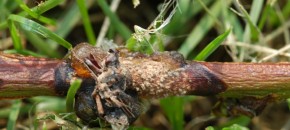Vegetable Integrated Crop Management Twilight Meeting Date: Tuesday, April 22, 2014 7:00 p.m. – 9:00 p.m. Location: East Vineland Fire Hall, Landis Ave. across from the Savoy Restaurant (park behind the building and enter conference room door in rear) The Rutgers Cooperative Extension Agricultural Agents of Atlantic, Cumberland and Gloucester Counties invite you to the […]
Continue reading...Herbicide Resistant Weeds in Small Grains
Herbicide-resistant weeds are an ever increasing problem. When most people hear herbicide-resistant weeds these days they think of glyphosate resistance. However, I think Group 2 resistance (or ALS-resistance) is just as bad, if not worse, for our area. Small grains is a crop that relies heavily on ALS herbicides for weed control, and over the […]
Continue reading...Weed Control in Onions
Weed control in onions can be difficult. Effective preemergence herbicides do not provide acceptable annual broadleaf control. Postemergence herbicides cannot be applied until the crop has 2 or 3 true leaves plus the flag leaf.
Continue reading...Farm Storage Facility Loans & Food Safety Equipment
From Cultivating Cumberland Vol. 19:4:4 The USDA has expanded the Farm Storage Facility Loan Program, giving growers the opportunity to purchase equipment to enhance food safety. Visit your FSA county office to learn more. Farm Storage and Facility Loans security requirements have been eased for loans between $50,000 and $100,000. Previously, all loans in excess […]
Continue reading...Fungicides for Peach Blossom Blight Management

There was a time when a grower only needed to consider the efficacy and price when deciding what fungicide to employ for disease control. However, as companies sought to discover fungicides that were more effective and less toxic to the environment and non-target organisms, the fungicides also became more site-specific. As a result, these newer […]
Continue reading...SFMANJ Spring Field Day Apr 22, 2014
The Sports Field Managers of New Jersey (SFMANJ) Spring Field Day covers topics such as the fertilizer law, weed control, irrigation, grasses, and field maintenance. Date: Tuesday, April 22, 2014 Location: South Delsea Park 152 South Delsea Drive, Glassboro, NJ Registration Flyer
Continue reading...